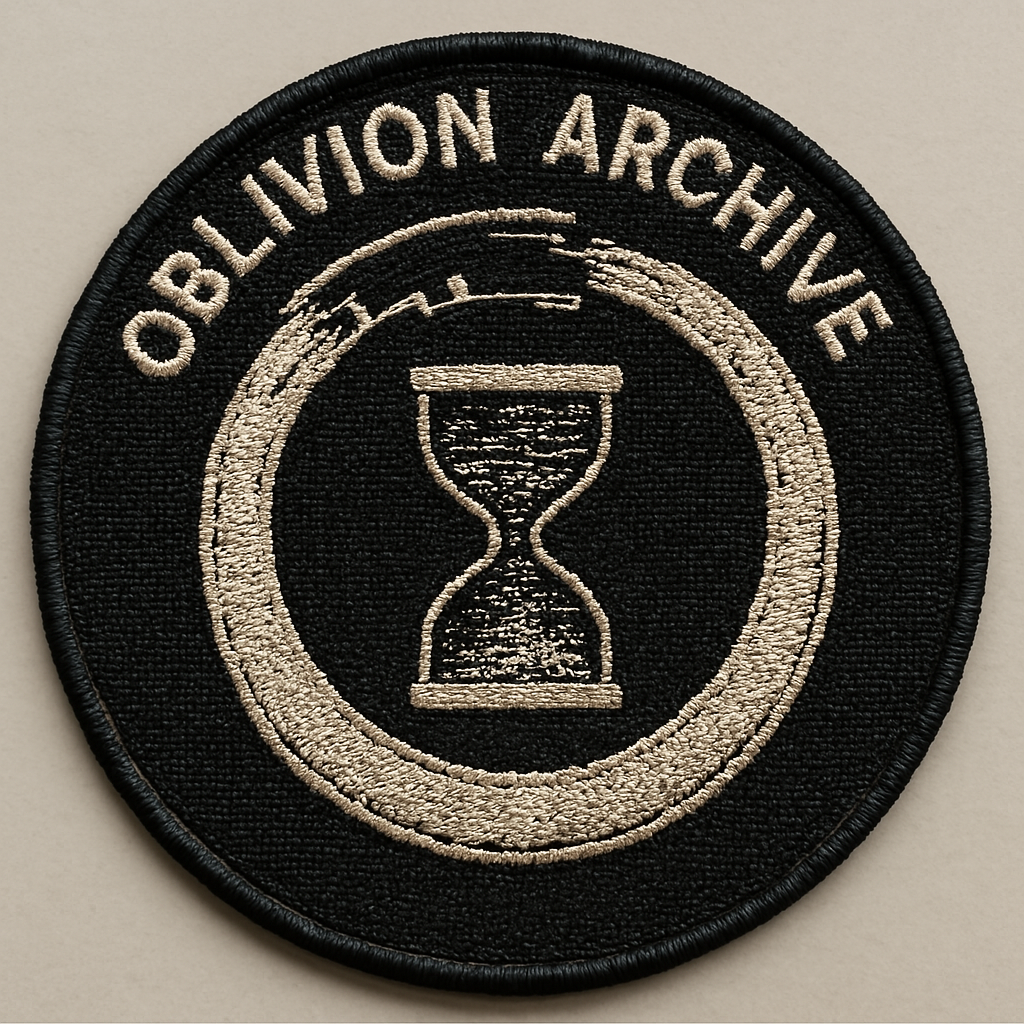OBLIVION ARCHIVE
Origin / History
Publicly, it doesn’t exist. Internally, the name appears—redacted—within decommissioned Pentagon infrastructure audits and obsolete CERN access logs. Founded in 1968 as a joint US-Swiss “data preservation protocol,” the original project was codenamed EULER-9. Its cover was innocuous: archiving cold war telecommunication metadata, preserving endangered languages, and modeling cryptographic decay.
But by 1973, EULER-9 was reabsorbed into a deeper directive under NATO black budget extensions, no longer reporting to any sovereign intelligence body. It became the OBLIVION ARCHIVE, a pan-temporal initiative to curate discontinuities—data that should not exist, patterns that recur across erased timelines, fragments of thought from minds that never lived.
Primary Function
Officially: digital archaeology. Memory preservation. Disaster-proof archiving.
Actually: the OBLIVION ARCHIVE is tasked with cataloging cognitive residues from aborted realities—memories, objects, phenomena
that have bled through from timelines that were pruned, overwritten, or collapsed. Some members believe they're preserving the last remnants of lost
worlds. Others claim they are actively editing consensus reality by determining what deserves to be remembered.
Unofficial motto: "What persists is permitted."
Symbols and Patches
An ouroboros formed of broken cassette tape, devouring its own tail. Inside the loop: a glitching hourglass, half-filled with static. No text.
Agents wear encoded lapel pins that resemble obsolete QR codes. Some have fragments of black magnetic tape stitched into their jackets or woven into watch bands—both symbolic and functional, used to store cryptographic keys for access to deep vaults.
A whispered sigil exists, shown only to archivists who’ve gone “beyond access”: three interlocking spirals scratched into a magnetic platter.

Known Operations
- GHOST INDEX // Warsaw, 1981 – A shipment of typewritten dream logs recovered from a defunct sleep study, none authored by the living. Participants identified themselves in dreams as former citizens of a city that was never built—Nowa Ruwań. The city appeared later in game code written by developers who had never heard of the project.
- PASSAGE 0 / Flagstaff Listening Array – In 1997, an unassigned fiber optic line began transmitting Morse code at irregular intervals. The messages were in an extinct Polynesian dialect, identical to entries from an 1853 ethnographic notebook that was lost in a fire. OBLIVION ARCHIVE cross-referenced the signal with seismic data and found correlations with subduction zone micro-quakes. No further comment.
Rumors and Anomalies
- Some field archivists report gradual memory erosion, as if the realities they work with begin editing them. Others speak of “mirror selves” who beat them to assignments and leave slightly misfiled metadata—intentional, perhaps malicious.
- Departure from the Archive is not resignation. You're offlined. Your presence is overwritten in systems of record. Sometimes, your own family forgets you without knowing why.
- Allegedly, the Archivist Prime is not human. Or wasn’t. They reside in Vault Null, which exists in a topological pocket beneath Geneva. Some say it’s actually in the year 2037.
Intersecting Organizations
- NULL SIBYL appears in archival records as a consultation entity but has no contact chain.
- ODIN-ECHO once attempted to breach Archive holdings during a brief alignment event in 2012. The result: six minutes of universal checksum corruption, casually referred to as "The Glitch" by insiders.